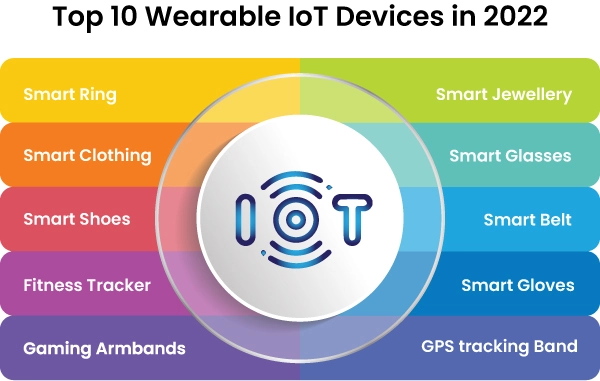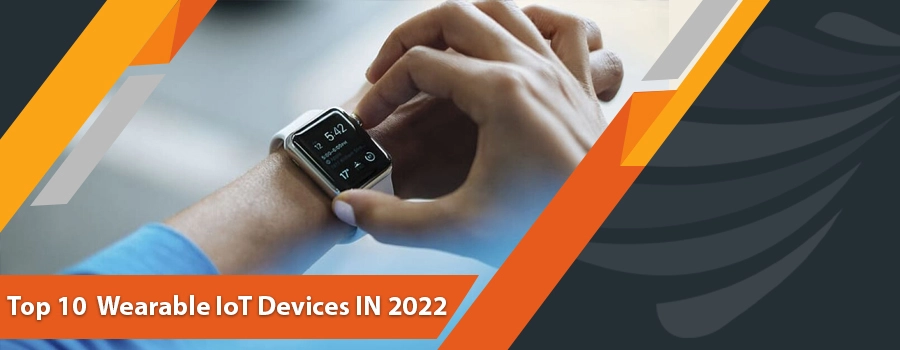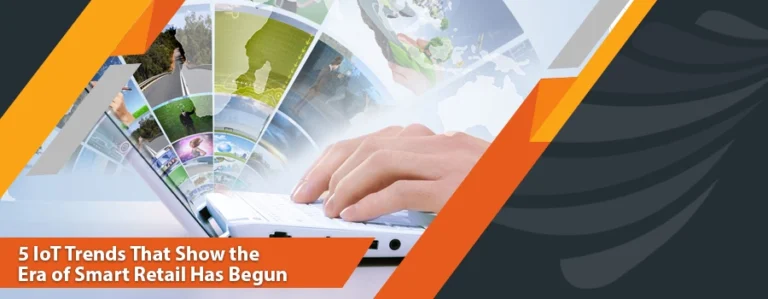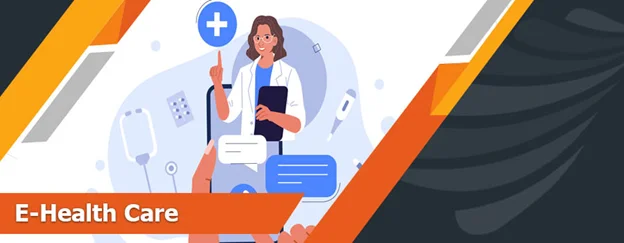Nearly a decade ago, no one has ever thought of having a palm-sized wearable computer that can track fitness and can monitor other activities of the human body, such as heart rate and stress level etc. However, with the connectivity options offered by IoT and the ability of advanced technology to shrink electronics, the wearable device has no longer remained a futuristic concept. Nowadays, people are becoming aware of a wide range of wearable IoT devices, such as fitness bands, smart watches and smart glasses etc. Wearable technology has now become highly advanced and has penetrated new markets as well which can help humans to upgrade their daily lifestyle. The market of wearable IoT devices is less likely to become obsolete in the future because, as per PR Newswire, the market of wearable devices will reach $62.82 billion by 2025 with a CAGR growth rate of 11.3%.

Wearable devices are the most popular IoT systems that have been adopted for personal use because these devices are not only easy to use but affordable as well.
The following article discusses the 10 most innovative wearable IoT devices with which everyone should be aware in 2022.
1. Smart Ring
The majority of the people face trouble in handling their car keys, house keys, metro cards and credit cards together, and fear of losing any of them is real. Smart Ring, which is powered by Near Field Communication technology (NFC) has the potential to solve the aforementioned problem. By appearance, a smart ring looks like a normal ring but there is a whole tech on the finger. The ring has network connectivity and it is embedded with sensors that are linked to the software through which the data can be shared or exchanged. The ring also incorporates intelligent technologies, for instance, door lick, net file share, soft voice, link share, business card share and program lock. With just a simple finger approach people can now pay their bills, use metro ticketing, unlock the car and home’s door if they are NFC enabled.
2. Smart Belt
Wearable IoT devices have also penetrated into the apparel and fashion accessories industries, for instance, the introduction of the smart belt is a perfect example of smart clothing. The smart belt does not only complements the look but also save the user from fall risks. By using algorithms and embedded sensors, the smart belt can easily predict the risk of fall from abnormal gait patterns. The smart belt measures the gait patterns, for instance, symmetry and speed and immediately alert the user if any potential fall risk is identified. The mobile phone application is also linked to the smart belt which can visualize the potential weight gain and can monitor the user’s activity, for instance, sitting habits, calories and step count.
3. Gaming Armbands
Many gaming devices enable the user to make their gaming adventure more engrossing, exciting and physical. The technology of gaming simulation is not new as the VR/ AR headsets have already given the ability to the gamer to be a part of the game. However, more innovative wearable IoT devices are coming into the market. For instance, the smart armband enables the gamer to control the gaming aspects just by their hand gesture. This armband has built-in sensors which detect the movement of the arm, muscle and fingers and replicate those movements in the virtual character in the game. This IoT enabled technology is ahead of gaming peripherals and vibrating controllers. The wearable IoT devices for gaming are focused on enhancing the user’s gaming experience.
.
4. Smart Shoes
IoT in combination with other advanced technology is transforming reality and everything that seems futuristic or unreal is now in use by human beings. One of the latest trends of the future is smart shoes. False-seated shoes for the players or individuals can cause an unsteady state and a balance problem which can cause immense pain. Smart shoes are embedded with IoT sensors and can easily overcome the aforementioned problem. The sensors keep the track of the blood pressure and adjust the shoe accordingly. Therefore, even if the feet are swollen by physical activity, the player still feels well. The smart shoe also tracks calories, steps, posture, fatigue and other health parameters to prevent injuries. Smart shoe is connected with the mobile phone application via Bluetooth to provide real-time and personalized coaching.
5. Fitness Tracker
The life of the people is getting busier day by day and in this hustle, people overlook their fitness and health. However, with the help of the latest wearable IoT fitness bands, people can now keep track of their daily fitness activities. The fitness tracker can track the calories burned, weight gained, distance travelled, blood pressure and heart rate. Some fitness trackers can even monitor sleep and indicate whether the user has an adequate level of sleep every day. The device also suggests healthy remedial. With wearable IoT devices, people do not need to worry about their fitness.
6. Smart Clothing
There is hardly any industry left where IoT does not have its traces. It is surprising to know that IoT has enabled clothing as well to embrace smart technology. Smart clothing is a wearable technology that provides all body or health-related information to the user. Smart clothing is the fusion of fashion and technology. Smart clothes have many sensors attached to them which track the physical condition of the wearer with accuracy. It can detect temperature, respiration rate, heart rate and other health-related information. These can be used widely for military purposes.
7. Smart Glasses
The advent of wearable computer glasses or smart glasses is extremely surprising and still seems like the thing of the future. But now smart glasses with smart functionalities are achieving reality. Smart glass is highly advanced wearable technology that can add useful information alongside an object or a view the wearer is seeing. These are widely being used for security and healthcare purposes. For instance, police can use smart glasses to identify the crime suspect by using facial recognition function. In healthcare, these glasses are being used for telemedicine, automatic patient data entry, hands-free video or photo documentation and rapid diagnostic. AR smart glasses have also been introduced to improve the eCommerce or retailing experience of the customer. The glasses can track promotions in-store and conduct a price or quality comparison for purchase. These glasses can also be used for navigation, indoor or outdoor sports activities and hand-free cooking assistance.
8. GPS tracking Band
Parents are worried about the safety of their children when they are roaming in the park or going to school as they cannot keep an eye on them every time. This is where GPS bands of trackers become handy. This wearable IoT device has a GPS receiver, it is flexible, waterproof, lightweight and harmless to health. A child can wear this GPS tracking band on the wrist. This helps the parents to keep the track of their children and immediately get alert on a mobile phone application whenever their child is in trouble. This device is also useful for individuals suffering from amnesia as they often forget their addresses. GPS tracking band can also be attached to the pet, especially a pet dog or a cat so that owners can track their pet’s location when it is lost.
9. Smart Gloves
During the last 40 years, smart gloves have remained under development to support human-computer interaction based on the movements of the finger or hand. Smart gloves incorporate a wide range of IoT sensors and these gloves can be used for different purposes, depending on the work they are designed for. Majorly, smart gloves have been designed to enable users to manipulate virtual objects by touching them more directly and intuitively. For instance, controlling objects in games, managing home appliances with a snap of a finger or most importantly, it can be used to bridge the gap between the normal masses and the people belonging to a deaf or dumb community. By converting sign language into text or speech with the help of smart gloves, deaf and dumb people can easily communicate with others. This wearable IoT device has not become a norm yet, but it will be soon.
10. Smart Jewellery
With the help of IoT and other advanced technology, jewellery can do much more than just be an ornament. Apart from fitness trackers and smart watches, jewellery can also monitor users’ activity with the power of IoT. Currently, in the market, there is IoT-enabled jewellery available that can be worn in different ways, such as bracelets, clips or necklaces. For instance, a beautiful pendant powered by IoT can work as a sleep monitoring device or an activity tracker. Smart jewellery can also help in detecting stress levels and generates recommendations on the mobile phone to relax the mind.
In Conclusion…
The wearable IoT devices are not limited to the aforementioned examples, but from the smart working of these devices, it can be expected that with IoT, the future will be thought-provoking. Wearable IoT devices will continue to evolve and will make human life much easier.




